NJIT Math 222
Problem 1
Consider the differential equation
Graphs below were drawn with Desmos and direction fields with the Slopes App.
The case
The graph of

The direction field looks very similar to that of
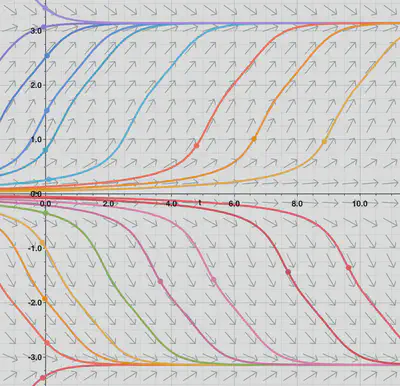
The case
Two new zeros have arisen on either side of

We can see in the direction field regions where the direction of the flow is reversed compared to the previous one.
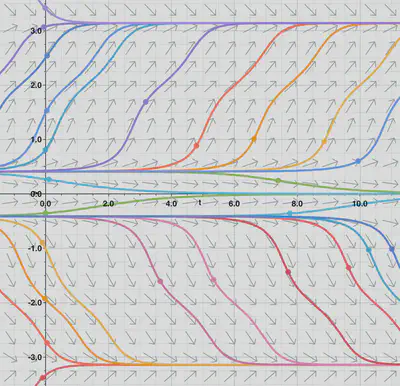
The case
Not much has changed here compared with the previous case, however the curves come very close to the

We can also see that trajectories slow down near
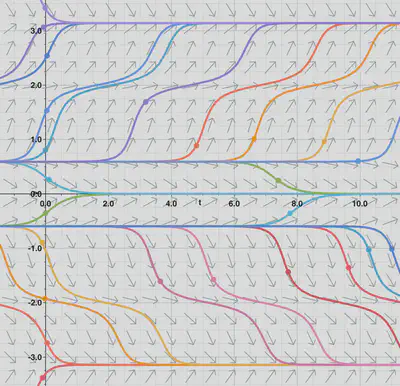
The case
Four new fixed points have arisen in pairs near

In the direction field, we can see new types of trajectories of the opposite slope near
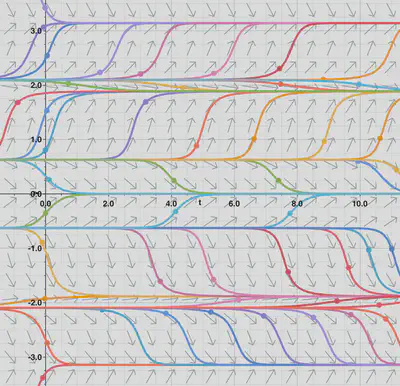
Problem 2
Graph the direction field and some solutions for the non-autonomous equation
The direction field looks like this:
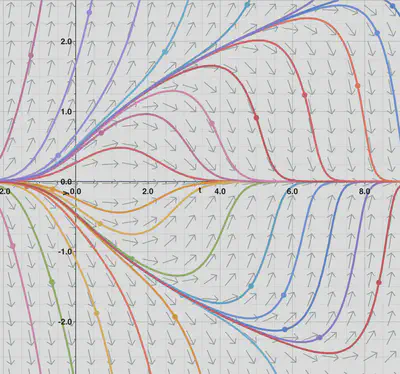
Solutions can either go to zero as